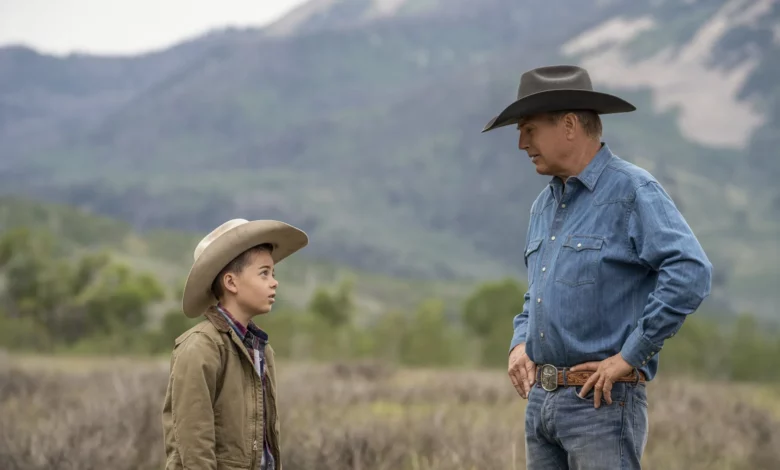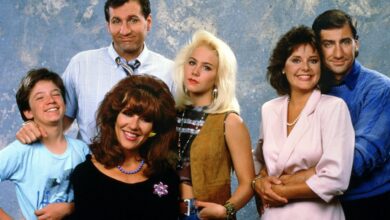Kevin Costner wants to film 5 movies in Utah. But there’s a catch — and it hinges on lawmakers

In the three years he spent shooting Paramount’s hit series “Yellowstone,” Kevin Costner got a good taste of Utah.
In his free time, he would slip down to the southern corners of the state, scouting locations for his long anticipated Western epic, “Horizon.” The production is no small endeavor — the initial film will set the foundation for a yearslong cinematic universe, amounting to five movies and dumping upwards of $50 million into whatever rural economy Costner settles on.
“This is a very, very large project,” said his attorney, Roger Armstrong.
Production is slated to begin in August, and Costner wants to film all five movies in Utah. But there’s a catch — the Utah Legislature needs to pass SB49.
Sponsored by Sen. Ron Winterton, R-Roosevelt, the State Film Production Amendments bill would exempt rural film productions from the limits on the state’s annual tax incentive program.
Winterton says the bill would make the state more appealing to high-caliber productions like Costner’s, which are proven to bring millions into small, often tourism-reliant rural economies.
And as Texas, New Mexico and Montana continue to increase their cap on tax incentives, Winterton hopes the bill will prevent large productions from jumping ship and moving out of state.
“I’ve dreamed for a long time about making my movie in Utah and scouting the state has been an incredible experience. My biggest hope is that the state backs SB49 and that dream becomes a reality. I don’t really want to go anywhere else with these five movies,” Costner said in a statement.
If the bill stalls in the legislature, it’s likely Costner will follow in “Yellowstone’s” footsteps and move to a state with a better tax rebate. “I don’t think he would have a choice,” said Armstrong.
One of the largest productions to ever come to the state, around 75% of the first three seasons of “Yellowstone” was filmed in Utah. Over three years, the production brought nearly $80 million to Utah’s economy, the majority of that spent in towns like Heber City, Oakley, Kamas, Grantsville and Logan.
:no_upscale()/cdn.vox-cdn.com/uploads/chorus_asset/file/23061130/merlin_2898115.jpg) A cabin that belonged to the “Yellowstone” fictional character Rip Wheeler, played by Cole Hauser, at Thousands Peaks Ranch is pictured in Summit County, on Dec. 2, 2021. Shafkat Anowar, Deseret News Purchase Photo
A cabin that belonged to the “Yellowstone” fictional character Rip Wheeler, played by Cole Hauser, at Thousands Peaks Ranch is pictured in Summit County, on Dec. 2, 2021. Shafkat Anowar, Deseret News Purchase Photo
But the show’s fourth season, which aired from November to January, was filmed almost entirely in Montana.
Productions that meet several requirements, including spending a minimum of $500,000 in Utah, are eligible for a 20% to 25% tax rebate as part of Utah’s film incentive program. However, the program has an annual $8.3 million cap, which is relatively small when compared to New Mexico’s $130 million.
So when the state has several large productions vying for a rebate — as was the case with both “Yellowstone” and the Disney Channel’s “High School Musical” remake — the cap limits what each show can receive, regardless of how much it spends.
Despite receiving around $7 million in rebates for seasons prior, the available kickback for “Yellowstone’s” Season 4 was substantially smaller.
So Paramount moved production to Montana, where the state Legislature raised its cap on incentives to $10 million before the 2021 session, then bumped it up to $12 million during the session.
It’s possible Winterton’s amendment to the tax incentive program could have kept “Yellowstone” in the state. Under his bill, the production would have received its full 25% tax rebate.
According to Armstrong, an entertainment attorney with decades of experience in the film industry, those tax incentives have become a deciding factor when productions choose a location.
“State film incentives are very much a critical element for financing virtually all films, regardless of the budget — whether you’re talking about a $200 million production or a $2 million independent feature,” Armstrong said.
Utah, he says, is an outlier.
“A single large production would soak up most of the incentive,” he said.
To be defined as a rural production, it must be state approved, and filmed primarily in third-, fourth-, fifth- or sixth-class counties. That would exclude Salt Lake, Utah, Davis, Weber, Washington and Cache counties.
But rural Utah, especially the southern reaches of the state with its unique geography, is often the draw for productions.
Winterton’s bill seems to be gaining traction among lawmakers. On Monday, SB49 got a 17-7 nod from the Senate in an initial vote. The bill will see another vote before it moves to the House for consideration.
“We do have good support in the public,” Winterton told the Deseret News. “In the Legislature, it seems like we need some help convincing them this is a good thing to do.”
The film incentive program sometimes sees opposition from people who call it “a handout to Hollywood millionaires and billionaires,” said Sen. Todd Weiler, R-Woods Cross, who was quoting an email he received from a constituent.
“Most generous forms of tax credit, refundable credits, had no employment effect and a temporary wage effect … spending more on incentives had no lasting impact on the economy,” the constituent wrote, citing a study from American Review of Public Administration.
Winterton says the credits are received “post-performance,” and that productions need to prove they are spending that money in the state.
That sentiment is what Jeff Johnson, president of the Motion Picture Association of Utah, calls “one of the biggest problems” for the state’s film incentive program. “People don’t understand that it’s not a Hollywood handout,” he told the Deseret News.
Instead, the production has to submit its budget for the Utah Film Commission to review — it then gets recommended to the Governor’s Office of Economic Development, which approves the budget.
Once the production actually spends the money, it’s subjected to an audit before it’s eligible for the rebate.
Often spent in rural economies, the rebate covers expenses for things like hotels and long-term rentals, production materials like lumber, rental cars, trailers, restaurant bills, catering costs, and more.
“It’s designed to help locals and to help put money into local communities,” Johnson said.
The economic impacts often go beyond what can be quantified in a rebate. Sometimes cast or crew buy homes in the state, return for ski vacations, post on social media — Costner even hired a hunting guide.
A study conducted by the international consulting firm Olsberg SPI pointed to what could be hundreds of millions of dollars funneled into rural Utah. Here are some key takeaways from the study:
- In fiscal year 2021, film and television productions spent $48 million in Utah.
- Since 2016, 25% of filming days in Utah were in rural areas.
- The film incentive program is costing the state — in 2018 Utah missed out on productions with budgets totaling $216 million, and $207 million in 2019. The number fell to $70 million in 2020 as the industry was hampered by the pandemic.
Regardless of where it’s filmed, Western movie buffs should keep an eye out for “Horizon.”
“It’s a remarkable project,” said Armstrong. “It’s some of the best writing I’ve seen, it really is.”





